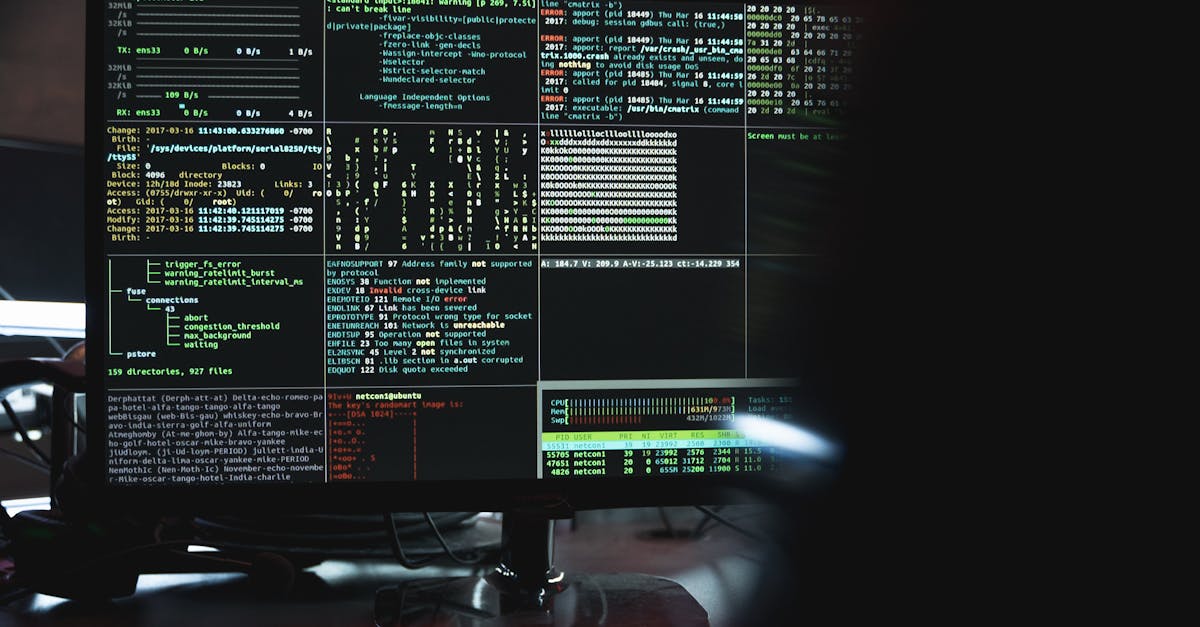Cybersecurity threats continue to evolve at a rapid pace, presenting significant challenges for businesses worldwide. As we approach 2024, staying ahead of these emerging threats is crucial for safeguarding sensitive data and maintaining business continuity. In this article, we delve into the latest cybersecurity trends shaping the landscape and provide insights on how organizations can fortify their defenses proactively.
Readers can expect an in-depth analysis of cutting-edge technologies such as AI and automation, along with practical strategies for implementing robust cybersecurity measures. By exploring these trends and best practices, businesses can equip themselves with the knowledge and tools needed to mitigate risks effectively. Join us on this journey to navigate the complex realm of cybersecurity and ensure a secure digital future.
Understanding Cybersecurity AI
The Rise of Artificial Intelligence in Cybersecurity: Artificial Intelligence (AI) is revolutionizing the cybersecurity landscape. AI-powered systems have the ability to analyze vast amounts of data in real-time, enabling organizations to detect and respond to threats at a speed and scale never before possible.
Machine Learning for Threat Detection: Machine learning algorithms play a crucial role in enhancing threat detection capabilities. By continuously learning from new data and patterns, AI-driven systems can identify anomalies and potential security breaches more accurately than traditional methods, helping businesses stay ahead of cyber adversaries.
Automating Security Operations: One of the key benefits of integrating AI into cybersecurity is the automation of routine security tasks. This allows security teams to focus on more strategic initiatives while AI handles repetitive processes such as monitoring network traffic, analyzing logs, and responding to low-level incidents swiftly and efficiently.
Leveraging Cyber Threat Intelligence
Understanding the Landscape: In the ever-evolving realm of cybersecurity, having access to timely and relevant threat intelligence is crucial. This involves gathering, analyzing, and interpreting data to understand potential risks and vulnerabilities that could impact an organization’s security posture.
Proactive Defense Strategies: By leveraging cyber threat intelligence, businesses can proactively identify emerging threats and take preemptive measures to mitigate risks. This proactive approach allows organizations to stay one step ahead of cyber attackers and reinforce their defense mechanisms before an attack occurs.
Collaborative Efforts: Sharing cyber threat intelligence with industry peers and collaborating with trusted partners can enhance collective defense capabilities. By fostering a collaborative ecosystem for sharing threat information, organizations can create a united front against cyber threats, making it more challenging for malicious actors to succeed.
Implementing Zero Trust Security
Zero Trust Security is a cybersecurity model centered on the concept of maintaining strict access controls and not automatically trusting anyone or anything inside or outside the network. Implementing Zero Trust requires organizations to authenticate and authorize all devices, users, and applications regardless of their location.
One key aspect of Zero Trust Security is the principle of least privilege, where users are granted only the minimum level of access they need to perform their job functions. This reduces the risk of lateral movement by cyber attackers within a network. By implementing strict access controls based on user roles and responsibilities, organizations can significantly enhance their security posture.
Embracing Zero Trust Security involves continuous monitoring and verification of user identities, devices, and activities to detect any anomalies or potential threats in real-time. By leveraging advanced technologies such as multi-factor authentication, behavior analytics, and encryption, businesses can proactively identify and mitigate security risks before they escalate into full-blown cyber incidents.
Embracing Cybersecurity Automation
In the rapidly evolving landscape of cybersecurity, the adoption of automation is becoming increasingly vital for organizations to stay ahead of sophisticated threats. Embracing cybersecurity automation allows businesses to streamline their security operations, detect and respond to incidents more efficiently, and reduce the risk of human error.
Cybersecurity automation tools can help organizations automate routine tasks such as threat detection, incident response, and vulnerability management. By leveraging these tools, security teams can focus their energy on more strategic initiatives while ensuring that critical security processes are executed promptly and accurately.
Furthermore, embracing cybersecurity automation enables businesses to enhance their overall security posture by enabling rapid response to cyber threats. Automated systems can quickly analyze vast amounts of data in real-time, helping organizations detect anomalies and potential breaches before they escalate. By proactively addressing security incidents through automation, businesses can minimize damage and mitigate risks effectively.
Strengthening Ransomware Protection
Ransomware attacks have become increasingly sophisticated in recent years, posing a significant threat to businesses of all sizes. To enhance ransomware protection, organizations should implement a multi-layered defense strategy. This includes regularly updating software and operating systems to patch vulnerabilities that cybercriminals could exploit.
Furthermore, conducting regular cybersecurity awareness training for employees is essential. Human error remains one of the leading causes of successful ransomware attacks. By educating staff on how to recognize phishing emails and suspicious links, businesses can mitigate the risk of falling victim to ransomware.
Employing robust data backup and recovery mechanisms is crucial in bolstering ransomware protection. In the event of a ransomware attack, having secure backups ensures that critical data can be restored without having to pay the ransom demanded by cybercriminals. A proactive approach to data backup minimizes downtime and financial losses associated with such attacks.
Keeping Up with Cloud Security Trends
As technology evolves, so do cybersecurity threats in the cloud. It’s crucial for businesses to stay informed about the latest cloud security trends to protect their sensitive data. One emerging trend is the focus on multi-cloud security, where organizations use a combination of cloud providers to diversify their risks.
Another key trend in cloud security is the emphasis on container security. With more companies adopting containerization for their applications, ensuring the security of these containers becomes paramount. Implementing tools like Kubernetes or Docker Security Scanning can help mitigate risks associated with container vulnerabilities.
Moreover, zero-trust security models are gaining momentum in the realm of cloud security. By assuming that all networks are untrusted, organizations can enforce strict access controls and verification protocols within their cloud environments. Embracing a zero-trust approach can significantly reduce the likelihood of unauthorized access and data breaches.
Following Cybersecurity Best Practices
Implementing Multi-Factor Authentication: Enhance security by requiring multiple forms of verification for accessing sensitive data. Utilizing biometrics, SMS codes, or hardware tokens adds layers of protection against unauthorized access, reducing the risk of data breaches and identity theft.
Regular Software Updates and Patch Management: Stay ahead of cyber threats by promptly applying software updates and patches to address known vulnerabilities. Outdated software can serve as an open door for cyber attackers to exploit weaknesses, making regular maintenance crucial in safeguarding your systems and data.
Employee Training and Awareness: Educate staff on cybersecurity risks and best practices to empower them as the first line of defense against potential threats. Training programs covering phishing awareness, password hygiene, and social engineering tactics help create a security-conscious culture within the organization.
Ensuring Cybersecurity Compliance
Compliance is Key: Ensuring cybersecurity compliance is crucial for businesses to adhere to regulations and standards. By implementing robust compliance measures, organizations can mitigate risks and protect sensitive data from potential breaches.
Regular Audits and Assessments: Conducting regular audits and assessments helps organizations identify gaps in their cybersecurity compliance posture. This proactive approach enables them to address vulnerabilities promptly and maintain a strong security framework.
Cybersecurity Training Programs: Investing in comprehensive cybersecurity training programs for employees is essential for ensuring compliance. By educating staff on security best practices and protocols, businesses can create a culture of security awareness that enhances overall compliance efforts.
Investing in Cybersecurity Training
Enhancing Employee Awareness: Cybersecurity training is crucial to enhance employee awareness regarding potential cyber threats. By investing in regular training sessions, businesses can empower their staff to recognize phishing attempts, suspicious links, and other common tactics used by cybercriminals.
Building a Culture of Security: Training programs not only educate employees on cybersecurity best practices but also help in fostering a culture of security within the organization. When employees understand the importance of safeguarding sensitive information and protecting digital assets, they become proactive in implementing security measures.
Staying Ahead of Evolving Threats: Continuous cybersecurity training ensures that employees stay informed about the latest cyber threats and attack techniques. By keeping abreast of emerging trends, businesses can proactively adapt their security protocols and defenses to mitigate risks effectively. Investing in ongoing training is an investment in staying ahead of cybercriminals.
Exploring Cybersecurity Solutions
Cutting-Edge Endpoint Security: Implementing advanced endpoint security solutions such as next-generation antivirus software and endpoint detection and response (EDR) tools can provide businesses with real-time threat detection and response capabilities. By continuously monitoring endpoints, organizations can proactively identify and mitigate potential security risks before they escalate.
Network Traffic Analysis: Leveraging network traffic analysis tools allows businesses to monitor network traffic patterns for anomalies that may indicate a security breach or unauthorized access. By analyzing network data in real-time, organizations can detect and respond to suspicious activities promptly, enhancing their overall cybersecurity posture.
Secure Access Service Edge (SASE): Embracing the SASE framework integrates network security functions with wide-area networking capabilities to deliver a comprehensive cloud-based cybersecurity solution. SASE combines secure access controls, threat protection, and data encryption into a unified platform, enabling organizations to efficiently secure their networks from anywhere while ensuring seamless connectivity for remote users.
Conclusion
As we delve into the realm of cybersecurity trends for 2024, it becomes evident that the landscape is ever-evolving. By embracing the latest technologies, best practices, and proactive measures outlined in this article, businesses can fortify their defenses against emerging threats and safeguard their valuable assets. Remember, in the face of challenges lie opportunities for growth and innovation – let us march forward with resilience and determination.




